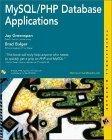Question
A palindrome is a character string that is equal to its reverse. A simple palindrome would be a word that is the same spelled forward
A palindrome is a character string that is equal to its reverse. A simple palindrome would be a word that is the same spelled forward or backward such as level. A palindrome can also be a phrase such as "Never odd or even". This is not a simple palindrome, since making it the same as its reverse requires that we ignore spaces and punctuation marks. For this assignment, a palindrome is defined to be a character string, where all non-alphabetic characters are ignored, and upper-case and lower-case versions of the same letter are viewed as equivalent. Alphabetic characters includes characters A through Z and a through z inclusive. Thus punctuation marks, digits, space, tab, carriage return, hyphens, underscores, and other non-alphabetic characters are ignored in the palindrome decision process. The assignment is to write a program that does the following. You will need to define extra functions to complete some of these tasks such as the first two bullet items: Prompts the user to type in a character string Gets the characters and stores them in a stack data structure. Makes use of the stack and a queue data structure to check for a palindrome. Defines a function isPalindrome that determines whether the string is a palindrome. The function isPalindrome returns 1 if x is a palindrome, and 0 if x is not a palindrome. int isPalindrome(char *x) Displays an appropriate message on the screen that indicates the string and whether the string is a palindrome or not. Programming Hints Your program will involve three files: main.cpp, Palindrome.cpp, and Palindrome.h. o The file Palindrome.h contains exactly one line, the prototype of your function isPalindrome. o The file Palindrome.cpp contains the definition of your function isPalindrome. It should have your name, the date, and #include "Palindrome.h". It should not contain a main function. o Your file main.cpp contains your main function. That file should also specify any #include files, including Palindrome.h. Your main program should thoroughly test the Palindrome program The following header files must be defined and included in the source code using the stacks and queues. o #include stack o #include queue You will need to submit the files with your submission of the other 3 files mentioned above. The following functions may be helpful and are provided by the C Standard Library: o int isalpha(char c) // returns non-zero integer if c is an alphabetic character, 0 if not o char toupper(char c) // returns the upper-case version of an alphabetic character Testing Suggestions A list of examples is given below in a C++ variable declaration. Make sure that you test for the following situations. 1. Test that your program returns a value of 1 on the examples. 2. Test that your program returns 0 if you change one of the characters in any of the examples. Examples "A dog, a panic in a pagoda" "A dog, a plan, a canal, pagoda" "A man, a plan, a canal-- Panama! // punctuation and spaces are ignored "civic" "If I had a hi-fi" "Do geese see God?" "Madam, Im Adam." "Madam, in Eden, Im Adam." "Neil, a trap! Sid is part alien!" "Never odd or even" "No devil lived on." "No lemons, no melon" "racecar" "RACEcar" // uppercase equals lowercase Rats live on no evil star." "Red rum, sir, is murder!" "Rise to vote, sir." "rotator" "rotor" "Step on no pets." "Was it a cat I saw?" "Was it a car or a cat I saw?" "Yawn a more Roman way. " Extra Credit (20 Points) Allow the user to choose whether to enter a string to check or a file to check In the case of a file, read each line of text from an input data file Write to the screen all lines that are palindromes with an appropriate message.
#ifndef QUEUE_H #define QUEUE_H #include
// Stack template template
// Queue operations void enqueue(T); void dequeue(T &); bool isEmpty() const; bool isFull() const; void clear(); };
//*************************************************************** // This constructor creates an empty queue of a specified size. * //*************************************************************** template
//*************************************************************** // Copy constructor * //*************************************************************** template
//*************************************************************** // Destructor * //*************************************************************** template
//*************************************************************** // Function enqueue inserts a value at the rear of the queue. * //*************************************************************** template
//*************************************************************** // Function dequeue removes the value at the front of the queue * // and copies t into num. * //*************************************************************** template
//*************************************************************** // isEmpty returns true if the queue is empty, otherwise false. * //*************************************************************** template
if (numItems) status = false; else status = true;
return status; }
//*************************************************************** // isFull returns true if the queue is full, otherwise false. * //*************************************************************** template
if (numItems < queueSize) status = false; else status = true;
return status; }
//***************************************************************** // clear sets the front and rear indices, and sets numItems to 0. * //***************************************************************** template
Stack.h
#ifndef STACK_H #define STACK_H #include
// Stack template template
public: //Constructor Stack(int); // Copy constructor Stack(const Stack&); // Destructor ~Stack(); // Stack operations void push(T); void pop(T &); bool isFull(); bool isEmpty(); }; //*************************************************** // Constructor * //***************************************************
template
//*************************************************** // Copy constructor * //***************************************************
template
//*************************************************** // Destructor * //***************************************************
template
//************************************************************* // Member function push pushes the argument onto * // the stack. * //*************************************************************
template
template
//************************************************************* // Member function isFull returns true if the stack * // is full, or false otherwise. * //*************************************************************
template
//************************************************************* // Member function isEmpty returns true if the stack * // is empty, or false otherwise. * //*************************************************************
template
Step by Step Solution
There are 3 Steps involved in it
Step: 1

Get Instant Access to Expert-Tailored Solutions
See step-by-step solutions with expert insights and AI powered tools for academic success
Step: 2

Step: 3

Ace Your Homework with AI
Get the answers you need in no time with our AI-driven, step-by-step assistance
Get Started


